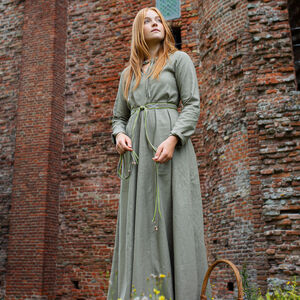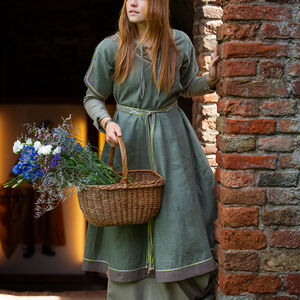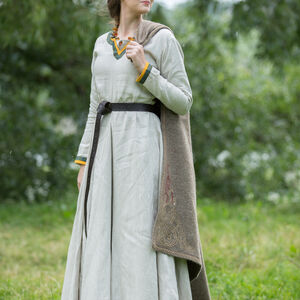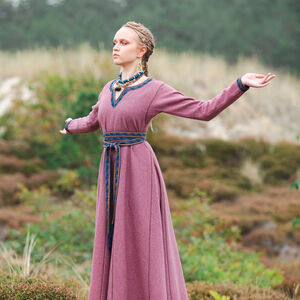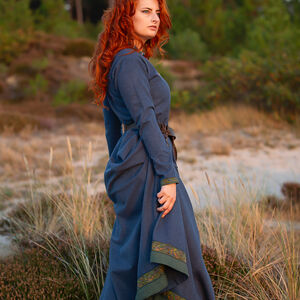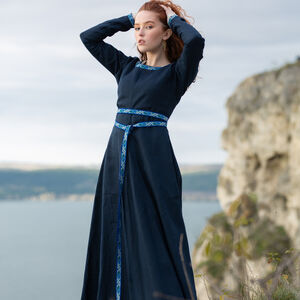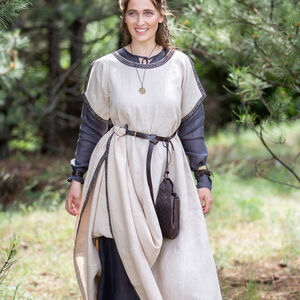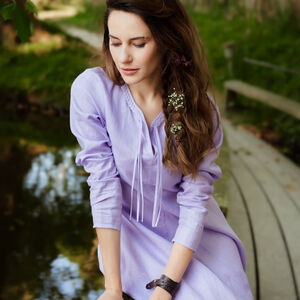Medieval women's tunic for sale
The widespread occurrence of the tunic in the infancy of mankind is demonstrated clearly by the etymology of the term itself. The name for this type of clothes derives from latin “tunica” which, in turn, is supposed to be of Semitic origin with the influence of Aramaic “kittuna”, Hebrew “kuttoneth and Ancient Greek “khiton”. This simple and multiform item proved to be the ideal choice as a standalone garb for warm climate zone and comfortable and hygienic underwear for northern lands. Starting from the Ancient Rome and till the end of Middle Ages epoch, it was worn by both men and women and in each period came to terms with the industry development level (production of woven fabrics), scientific progress (bright colours dyeing) and impact of the religion (appropriate length and cut).
Medieval tunic clothing for women nowadays
For a contemporary dame, the medieval women's tunic is one of the most comfortable, conventional and habitual type of clothing: it doesn’t require waiting-lady as multilayered dresses with corset tightening and underskirts. However, it is tailored and is ready to wear, unlike early tunics, which had to be draped and fixed every time with fibulas and laces on the spot. In our women's medieval tunic store you can find model frocks with all the different types of sleeves:
- Long narrow sleeves with regular fit
- Narrow sleeves with lacing for even more precise fit
- Flattering wide sleeves with a drawstring that allows to shorten or bind them around your biceps
You can also choose between different periods and styles:
- Classic long-sleeve medieval tunics
- Short-sleeved tunic dresses for LARP events
- Reenactment level tunics: Viking, Classic Middle-Ages and Renaissance
- Fantasy maxi-tunics in different styles
- Renaissance Fair garments
What is the difference between a dress and a tunic?
The debate over whether a tunic is considered a dress has been ongoing for quite some time. While both garments are similar in some ways, there are distinct differences that set them apart.
A tunic is typically a loose-fitting, knee-length garment that can be worn with pants or leggings. It often has a simple, straight design and is commonly made from lightweight, breathable fabrics. On the other hand, a dress is a one-piece garment that covers the body and extends to varying lengths, from mini to maxi.
The main difference between the two lies in their intended use and styling.
Viking, fantasy, ethnic, medieval female tunics – variety of styles and plenty of shades of natural linen of high quality. We use three variations of pure linen fabric: thin semitransparent linen ideal for a basic layer of undertunics; regular flax linen in a dozen of bright colours for self-sufficient wear; dense unbleached flax similar to sackcloth for magic and pristine fantastic flared robes.
Buy medieval women's tunic (or rather two or three!) for thematic events, occasional masquerades, festivals and Renaissance Fairs!

